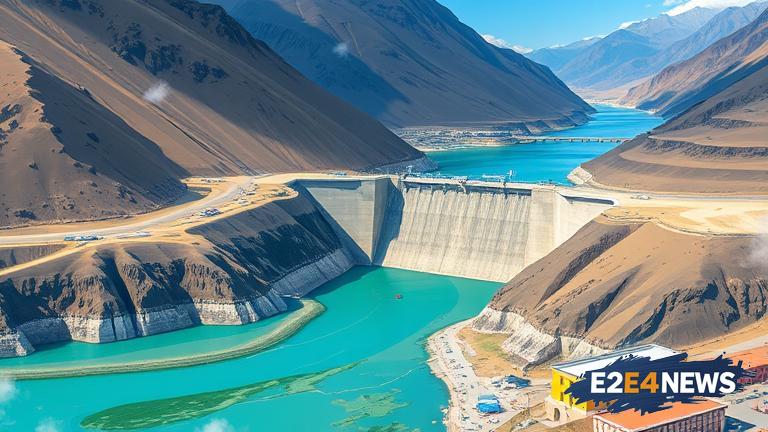The construction of a dam on the Yarlung Tsangpo river by China has raised significant concerns in India, particularly in the state of Arunachal Pradesh. The dam, which is being built in the Tibet Autonomous Region, has the potential to disrupt the natural flow of the river, which is a major source of water for the Brahmaputra river in India. The Brahmaputra river is a vital source of water for millions of people in India, and any disruption to its flow could have severe consequences for the country’s agriculture, industry, and drinking water supply. The Indian government has expressed concerns over the dam’s potential impact on the environment and national security, and has called for China to provide more information about the project. The dam is part of China’s larger plan to develop its western regions, including the Tibet Autonomous Region, and to increase its control over the region’s water resources. The project has sparked protests from environmental groups and local communities, who are concerned about the potential impact on the region’s ecosystem and the displacement of people. The Indian government has also raised concerns about the potential for China to use the dam as a tool for political leverage, particularly in the context of the ongoing border dispute between the two countries. The dispute over the dam has highlighted the need for greater cooperation and transparency between India and China on issues related to water management and environmental protection. The Indian government has called for a joint mechanism to monitor the flow of the Brahmaputra river and to address any concerns or disputes that may arise. The construction of the dam has also raised concerns about the potential impact on the region’s biodiversity, including the endangered Bengal tiger and the Indian rhinoceros. The dam is expected to have a significant impact on the region’s ecosystem, including the disruption of natural habitats and the loss of biodiversity. The Indian government has also raised concerns about the potential for the dam to increase the risk of floods and landslides in the region. The construction of the dam has sparked a heated debate in India, with some arguing that the project is a necessary step to meet the country’s growing energy needs, while others have raised concerns about the potential environmental and social impacts. The Indian government has announced plans to increase its monitoring of the Brahmaputra river and to take steps to mitigate the potential impacts of the dam. The construction of the dam has also raised concerns about the potential for China to use the project as a means of exerting pressure on India, particularly in the context of the ongoing border dispute. The Indian government has called for greater transparency and cooperation from China on issues related to water management and environmental protection. The dispute over the dam has highlighted the need for greater cooperation and dialogue between India and China on issues related to national security and environmental protection. The construction of the dam has sparked a wider debate in India about the need for greater investment in renewable energy and sustainable development. The Indian government has announced plans to increase its investment in renewable energy and to reduce its dependence on fossil fuels. The construction of the dam has also raised concerns about the potential impact on the region’s cultural heritage, including the displacement of local communities and the loss of traditional ways of life. The Indian government has called for greater protection of the region’s cultural heritage and for the rights of local communities to be respected. The dispute over the dam has highlighted the need for greater cooperation and dialogue between India and China on issues related to national security, environmental protection, and cultural heritage. The construction of the dam is expected to have significant implications for the region’s ecosystem, biodiversity, and cultural heritage, and has sparked a heated debate in India about the need for greater transparency and cooperation from China.





